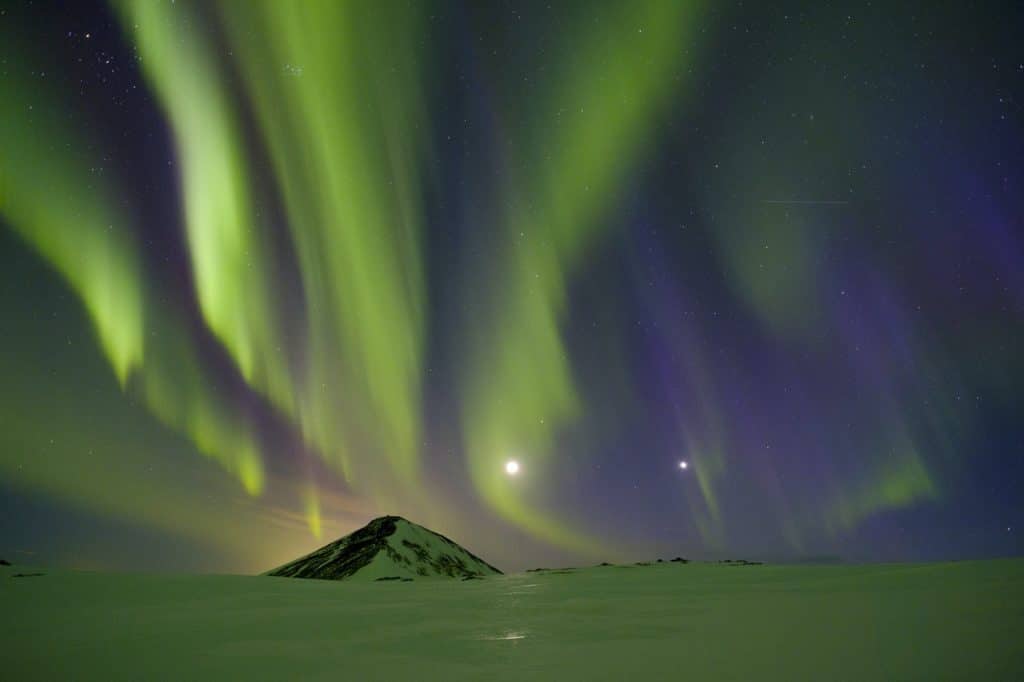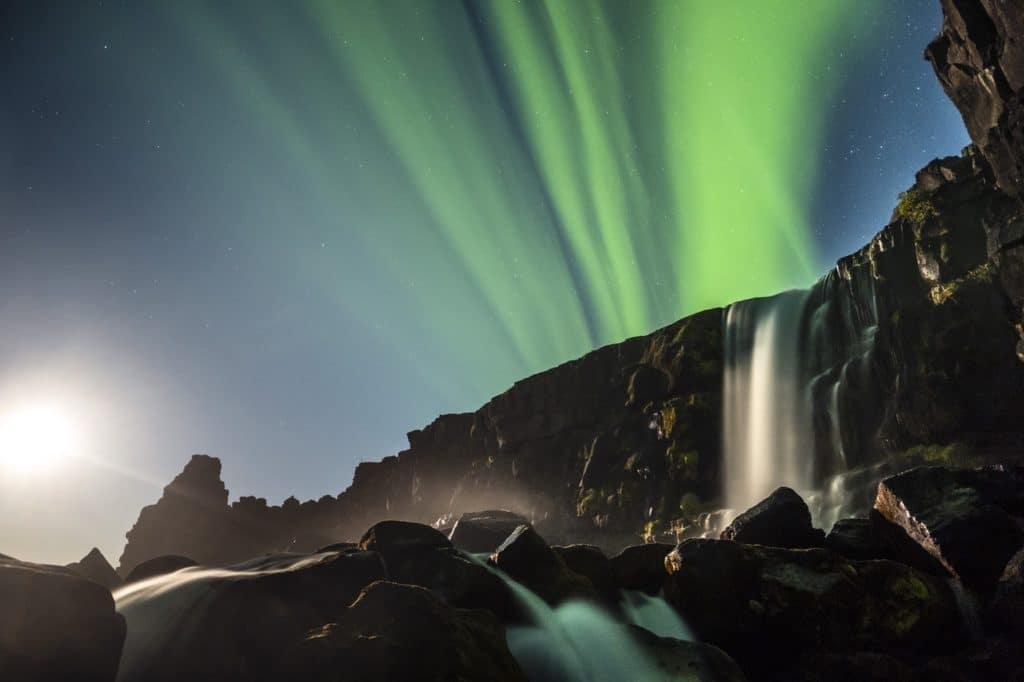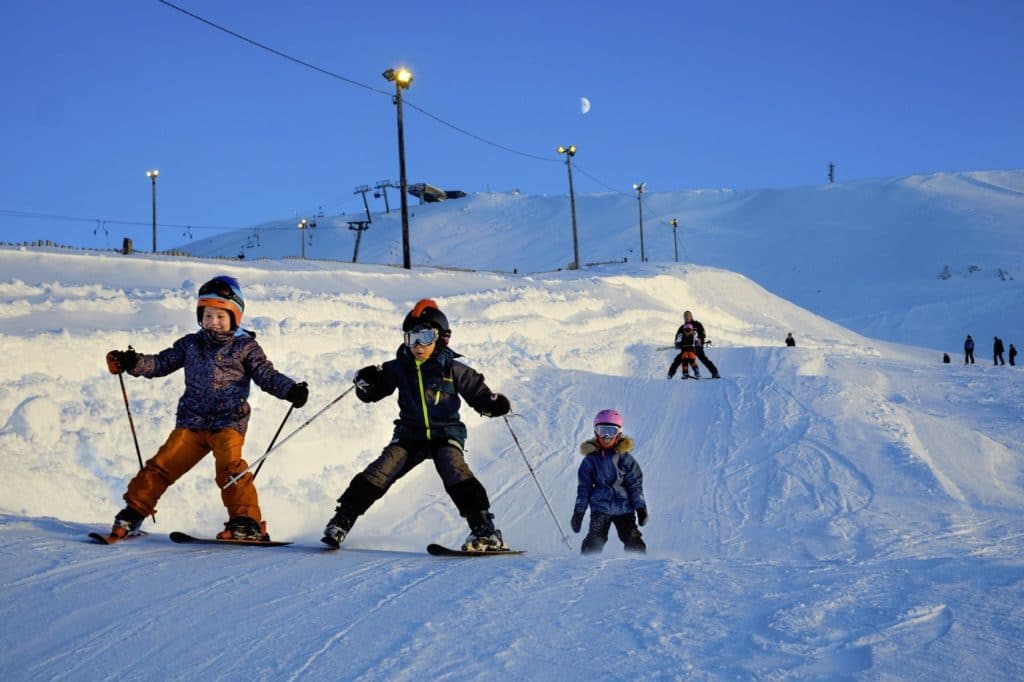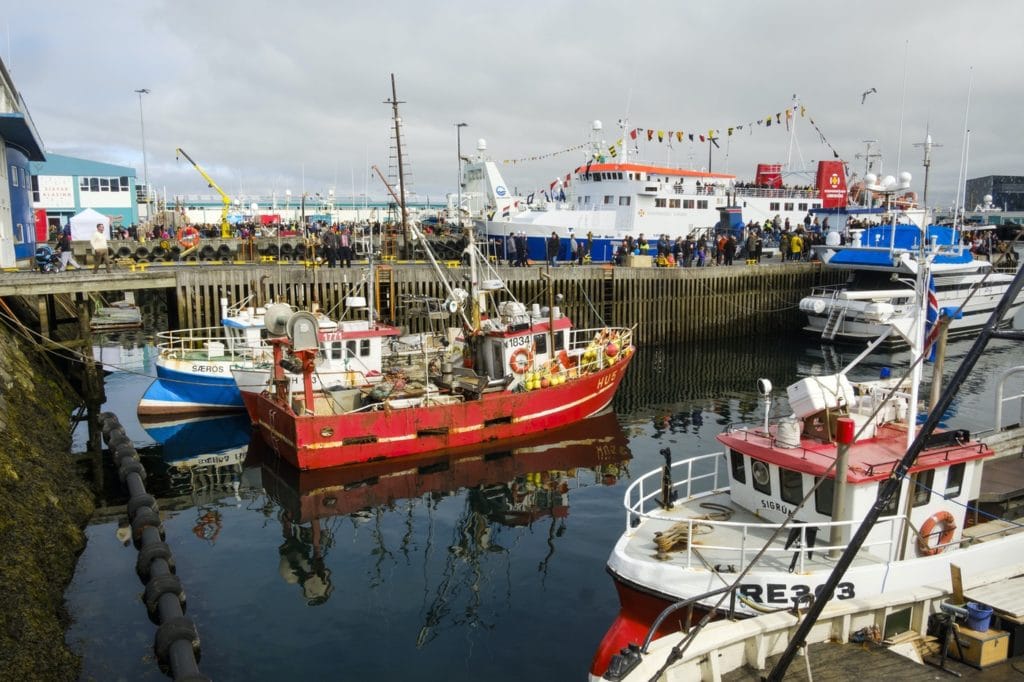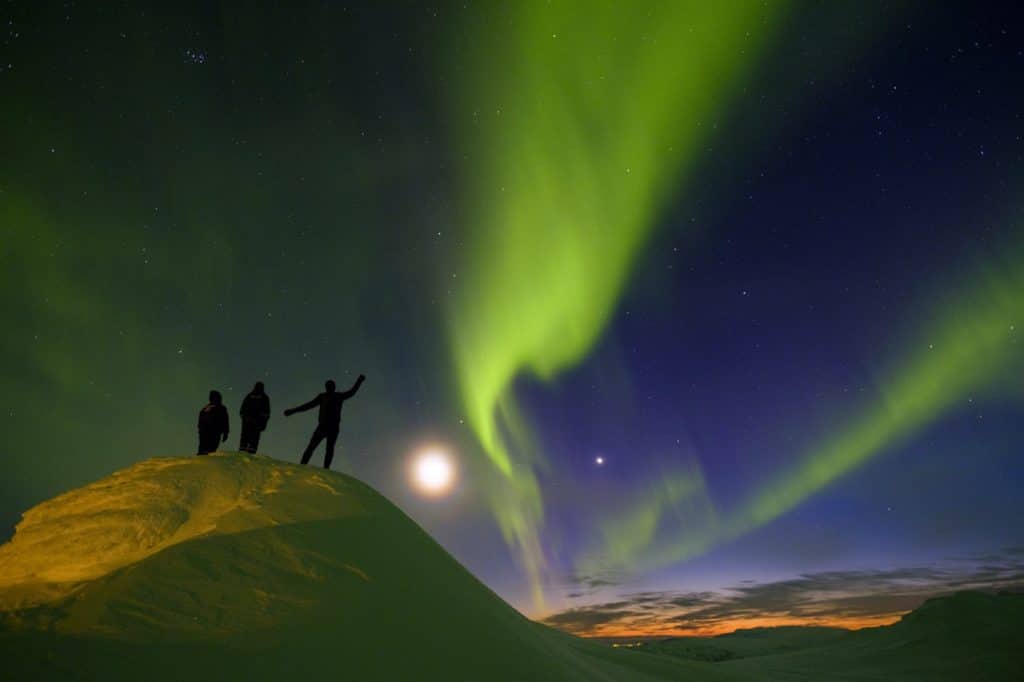Iceland has plenty of natural attractions – glaciers, waterfalls, and black sand beaches – but one of the most popular sights in Iceland is up in the sky! The aurora borealis, or the northern lights, are wisps of coloured lights that sometimes stretch across the arctic sky. If you get the chance to see them, watching these sheets and ribbons of light glide slowly around the winter night sky is a magical experience.
The lights may look magical but the science behind them is even more fascinating. These soft lights we admire here on earth are caused by great solar storms, tearing across the sun’s surface, or holes in the sun’s corona. Particles released from the sun during these massive storms travel through space and when they hit earth’s atmosphere, they burn up in a flash of colour.
The colour of the lights depends on where in the earth’s atmosphere the particle’s burn up and they can be purple, pink, or even red, although the most common shade of the northern lights is green.
The northern lights only appear around the magnetic north pole of the earth, so Iceland and Northern Scandinavia are the best places to see them. It’s not the only places to see this phenomenon though, the northern lights have a southern counterpart known as the southern lights or aurora australis.
The northern lights aren’t visible in summer, because their delicate brightness is overshadowed by the midnight sun. They also manifest high in the sky, so on cloudy nights, they can’t be seen. Check out these tips and tricks to maximise your chances of seeing the elusive lights!

